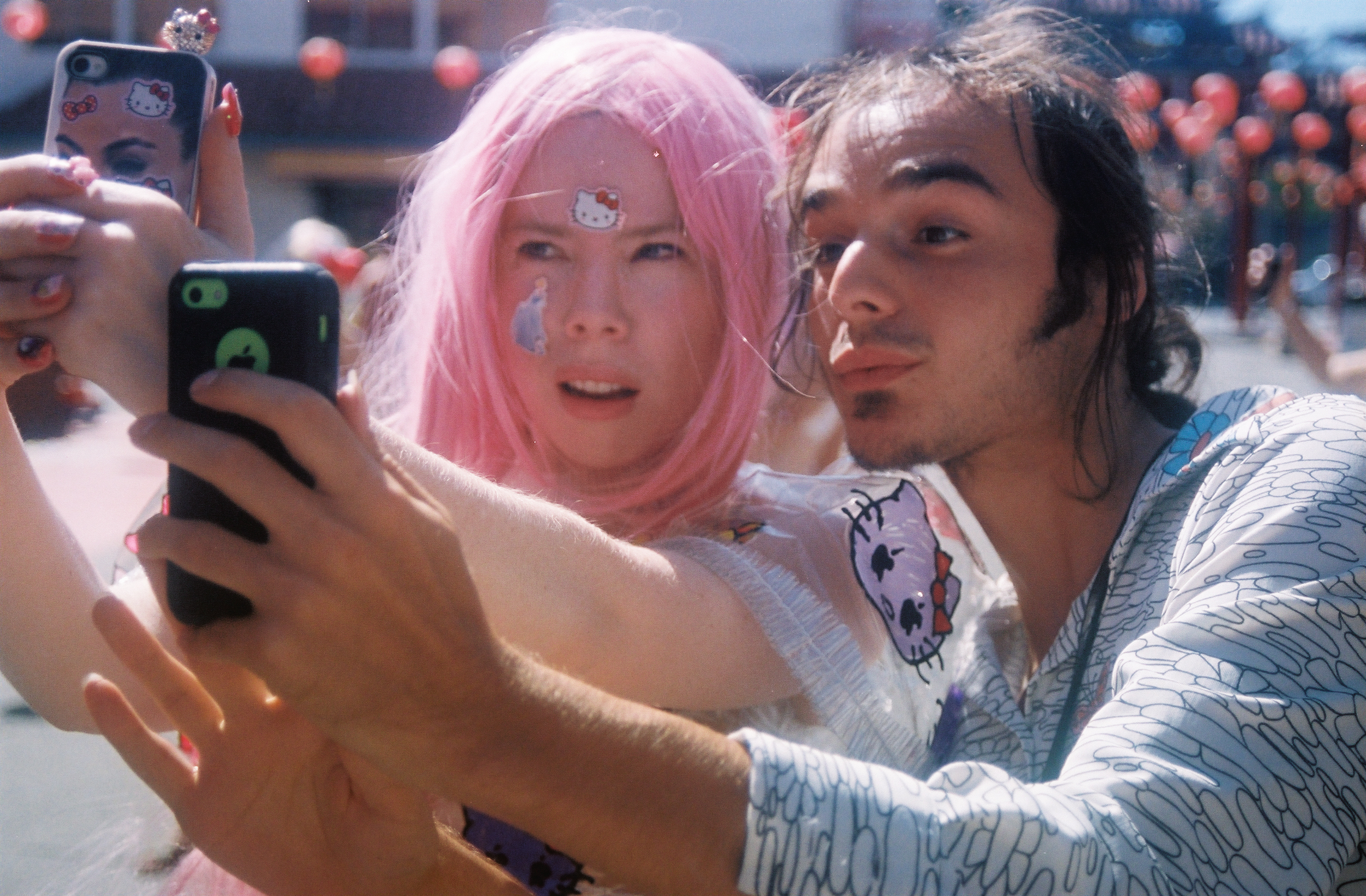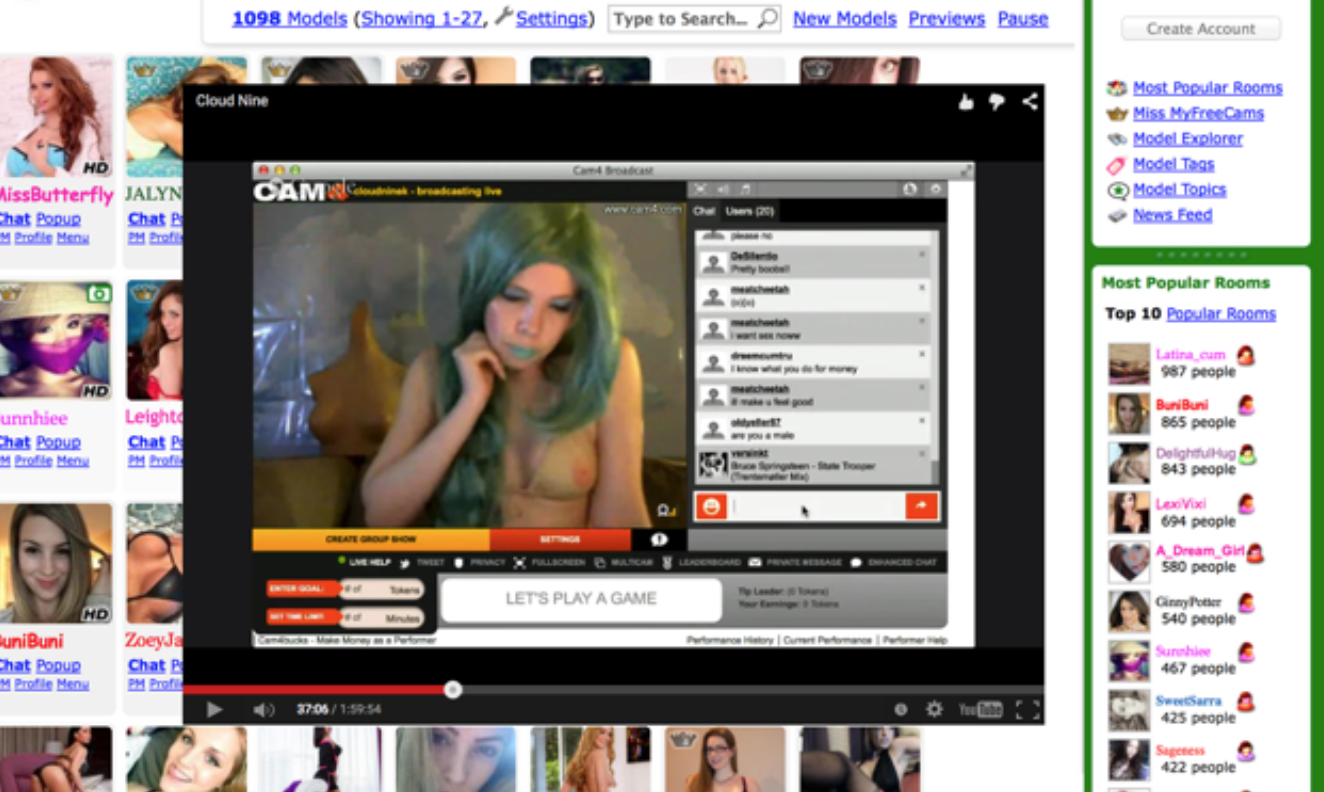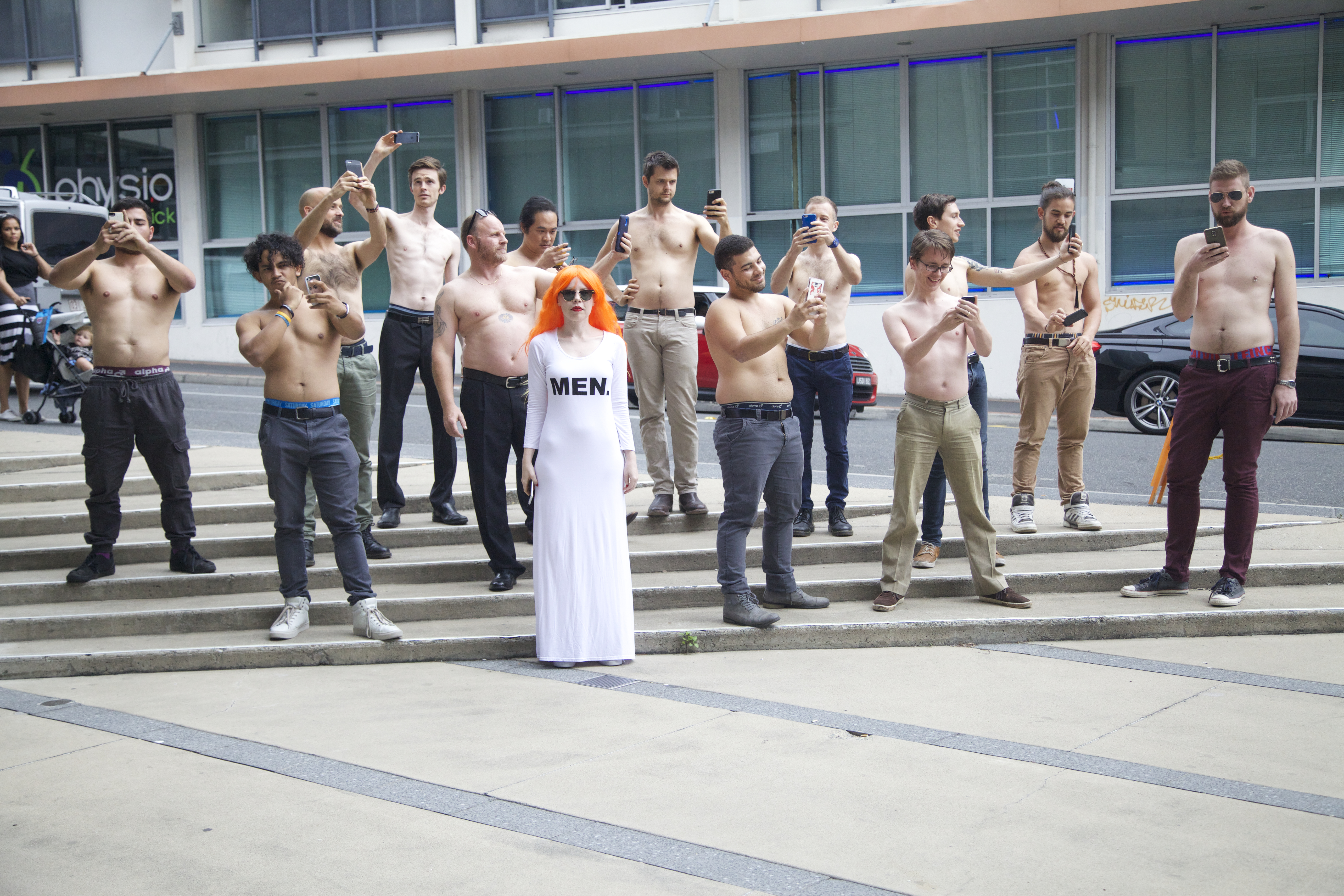Which parts of ourselves do we choose to bare in public? What are the likes, experiences, and frustrations that we carefully curate to represent who we are to the world? With a color wheel of social-media platforms, reality TV, selfie sticks, and constant surveillance to choose from, it makes sense that we feel an uncomfortable distance between the professional selves we convey online and the selves we actually are. Kate Durbin’s work focuses on that space, gently bridging the gap between our exposed and hidden parts through a merciless girliness (think pink!) and a conceptual commitment to remaining nonjudgmental.
Durbin gracefully holds up a mirror to the twenty-first century’s societal quirks. Her book e! Entertainment consists entirely of transcripts from reality shows. Her performance Hello Selfie questioned why a scene of women consistently taking pictures of themselves seemed so out of place in a society where their looks constitute the bulk of their value. In the project Cloud 9, Durbin confronted the users of a cam-girl site, sharing stories anonymously submitted by women artists about the craziest thing they’d done for money, while asking chatroom members to do the same. In The Supreme Gentleman, Durbin read the transcript of the final, hysterically masochistic 2014 YouTube video made by Elliot Rodger, the shooter in Isla Vista, California, to a selfie stick. All involving an element of personal and community exposure, Durbin’s projects scream for the women kept silent, revealing the most uncomfortable, embarrassing aspects of society that make their way inside all of us.
This interview includes ART21 Magazine’s exclusive release of the artist’s restaging of A Supreme Gentleman.
Lindsey Davis: You told FEM magazine that when you were younger, feminist art saved your life. Can you remember which artists or artworks you first encountered that made you realize feminist critique wasn’t just important but necessary?
Kate Durbin: I went to conservative Evangelical Christian schools all the way through my undergrad education at Biola University, the Bible Institute of Los Angeles. My whole childhood and adolescence I was taught that feminists were man-hating baby killers, that men should be the heads of the household. The Internet was still nascent then so I had no access to real feminism until two poets I read in a college English class: Sylvia Plath and Marge Piercy. Plath’s Lady Lazarus was so angry, so sarcastic and shimmery and slippery. And Piercy’s A Work of Artifice was the story of my own life up to that point: the bonsai tree that could have grown sixty feet tall on a mountainside, planted in a small pot, trimmed down and lied to. I remember reading that poem and feeling so angry at every adult I’d ever known, thinking: “Why didn’t you show me this before?” After that I started the first feminist group at Biola. This made me famous on campus, and hated. I taught the classic feminist texts to myself, then to others on campus who wanted to learn, as the school had no women’s studies program. My whole life changed because of those two poems.
LD: What do you think about the idea of “leaning in”? Is there really a way women can battle the distorted expectations we’re faced with?
KD: I have read a few articles, including one by bell hooks, talking about how the lean-in phenomenon doesn’t address some of the larger problems with labor and capital in our world today. Do we really want to lean into a sixty-hour workweek, producing more consumable goods the world does not need? Do we really need more CEOs? Also, leaning in has never worked for me. Some of us just can’t fit with the dominant paradigm, no matter how hard we try. So I make art instead.
LD: What does it mean for you as an artist to expose yourself, physically and emotionally online? What’s the line you won’t cross?
KD: I thought about this a lot with Cloud 9, an interactive online performance where I shared all the things I have done for money as well as all the things other women artists had done for money (they submitted their stories to me anonymously) on a sex cam site. Money is a greater taboo than sex in our society, so strong is our shame around it. My ethics around performing online have to do with getting to a point of vulnerability, about crossing lines to get to something true and difficult, not stopping at a performance that is done for applause. This kind of work is, for obvious reasons, hard. It’s hard whether online or IRL, although online can be harder in some ways because people are meaner.
LD: Do you see your work as satire, a societal critique, or something else?
KD: Critique is a part of my work, but it’s not the ultimate goal. Critique or satire suggests this separate mind reproaching something, even though it can be a loving reproach. I want to challenge myself to move beyond that to the ways in which we are not better than the Kardashians, but rather how we collude with them to create a world where Kardashians are our Queens and we their worker bees in a dazzling, dying hive.
https://youtu.be/gYkZAJBlW9Y
LD: How does the way you’re exposed in The Supreme Gentleman relate to the way Elliot Rodger exposed himself to the world online?
KD: Rodger shared his hatred of women and people of color online on discussion boards and his YouTube channel for months leading up to the Isla Vista shooting, but no one cared because this type of violent language is considered normal on the Internet. I performed The Supreme Gentleman for the Yes All Women Benefit in Los Angeles, curated by the brilliant Jessie Askinazi, using the script from Rodger’s last YouTube video, “Elliot Rodger’s Retribution.” I wore a grotesquely long Lady Godiva blonde wig & a thong bikini bottom with the BMW logo stitched on it. I did this because Rodger wanted to possess blondes and BMWs, two symbols of high status in US culture. Other than my stringy hair and string bikini bottom, I was naked except for my selfie stick. I performed in a squeaky, adolescent “mouse” voice, then halfway through switched to a demon voice, the voice of U.S. white male entitlement that says the same things as the mouse child but now he is big enough to have guns. I wanted to embody Roger’s text as one of the things he so objectified (I am a blonde white woman). I wanted to embody these things in a kitschy way to emphasize that what he wanted is a mirage.
I think The Supreme Gentleman ultimately exposes neither Rodger nor me as individuals, but rather the violence that hides in plain sight online, these toxic ideas circulating in our media that feed into IRL violence. My body became a kind of feedback loop or live feed or wire transmuting that violence URL/IRL.
LD: What connections do you see between societal expectations for men and women, and the way we express ourselves online?
KD: I did a version of Hello Selfie with men in Australia. It was so hard to get men to participate, and once I finally had a group willing to take off their shirts and take selfies for an hour straight at an outdoor mall, the crowd was incredibly standoffish. Most people barely even glanced at this spectacle of shirtless selfie-taking men! Some of that is probably related to cultural differences between the U.S. and Australia, but with the femme versions of Hello Selfie, people felt entitled, getting in the women’s space, ogling. Funnily enough, I think women’s selfies are seen as vain, but very femme and sexy—women’s selfies are the selfies the culture wants to look at (and then get upset about). I’d like to see more dude selfies please!
Kate Durbin is performing a new work, Hoarders (based on the television show) at Human Resources Gallery in Los Angeles on August 6th.






